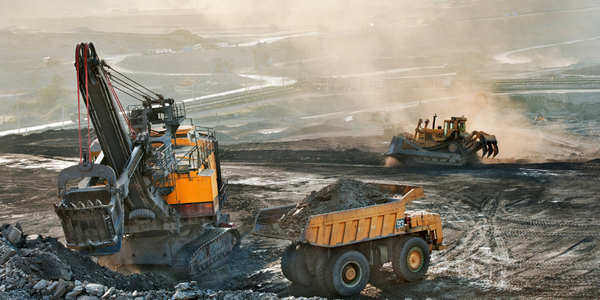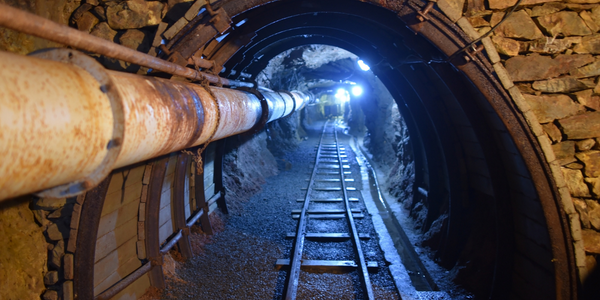下载PDF
De Beers Canada Replaces Paper-Based Processes with Intelex, Streamlines EHS and Quality Management
技术
- 平台即服务 (PaaS) - 数据管理平台
适用行业
- 矿业
适用功能
- 质量保证
- 商业运营
用例
- 监管合规监控
服务
- 系统集成
挑战
De Beers Canada was in need of a robust management system to maintain its ISO 9001, ISO14001 and ISO 17025 certifications. The company also wanted a system to track and manage compliance with the OHSAS 18001 standard. The existing paper-based processes were inefficient and the company wanted to implement an electronic system to streamline information, minimize inefficiencies and improve organizational communication. The company needed a system with the customizability and flexibility to meet the overall needs of the organization as well as individual users’ needs.
关于客户
De Beers Canada is a part of the De Beers Group, the world's leading diamond company. The company is involved in various aspects of the diamond value chain, including exploration, mining, sorting, valuing and selling. De Beers Canada operates in the challenging and complex mining industry, where maintaining safety, environmental and quality standards is crucial. The company holds ISO 9001, ISO14001 and ISO 17025 certifications and also complies with the OHSAS 18001 standard. To maintain these standards and improve efficiency, the company sought to replace its paper-based processes with an electronic system.
解决方案
De Beers Canada implemented Intelex’s Integrated Management System. The system was customized with a special focus on safety incident and accident reporting, audits management, nonconformances, corrective/preventative actions, training, document control, and management review modules. The company is currently managing approximately 2000 documents within document control. Intelex’s client services remain reactive to the clients’ needs, are readily available and provide a depth of support to address the needs of all users.
运营影响
相关案例.

Case Study
Underground Mining Safety
The goal was to produce a safety system to monitor and support underground mining operations; existing systems were either too simple (i.e. phone line) or overly complex and expensive, inhibiting deployment, and providing little-to-no support in event of an accident. Given the dangerous nature of the mining work environment and the strict regulations placed on the industry, the solution would have to comply with Mine Safety and Health Administration (MSHA) regulations. Yet the product needed to allow for simple deployment to truly be a groundbreaking solution - increasing miner safety and changing daily operations for the better.

Case Study
Mining Firm Quadruples Production, with Internet of Everything
Dundee Precious Metal’s flagship mine, in Chelopech, Bulgaria, produces a gold, copper, and silver concentrate set a goal to increase production by 30%. Dundee wanted to increase production quality and output without increasing headcount and resources, improve miner safety, and minimize cost.

Case Study
Fastenal Builds the Future of Manufacturing with MachineMetrics
Fastenal's objective was to better understand their machine downtime, utilization, quality issues, and to embrace cutting-edge manufacturing technology/process improvement capabilities to bring their team to the next level. However, there was a lack of real-time data, visualization, and actionable insights made this transition impossible.

Case Study
Joy Mining Systems
Joy equipment faces many challenges. The first is machine integration and control. The business end of the machine has a rapidly-spinning cylinder with 6-inch diamond-studded cutting teeth. It chews through rock at rates measured in tens of tons per minute. The system grinds through the rock in front, creating a rectangular mine tunnel. Hydraulic lifters support the ceiling as the machine moves forward. Automated drills and screws drive 3-ft long screws into the ceiling to stabilize it. The rock and coal fall into a set of gathering "fingers" below the cutting cylinder. These fingers scoop up the rock and coal and deposit it onto a conveyor belt. The conveyor passes under the machine and out the back. A train of conveyor belt cars, up to a mile long, follows the cutter into the mine. The rock shoots along this train at over 400 feet per minute until it empties into rail cars at the end. Current systems place an operator cage next to the cutter. Choking dust (potentially explosive), the risk of collapse and the proximity of metal and rock mayhem make the operator cage a hazardous location.

Case Study
Improved Monitoring in Industrial Manufacturing Facility
When your crane is moving tons of magma-hot iron, you can’t afford an unexpected failure. McWane Ductile knew monitoring the crane motor metrics within their facility could help prevent a mechanical failure that would strand an enormous bucket of molten metal overhead. Unfortunately, their legacy wired monitoring system couldn’t work with moving objects in this extreme environment. If they could integrate wireless capabilities into their existing equipment they could extend their monitoring capabilities without starting over from scratch.






